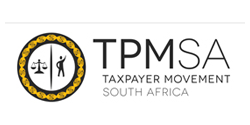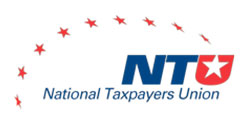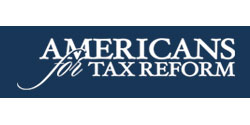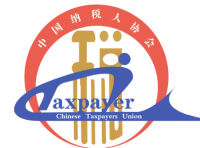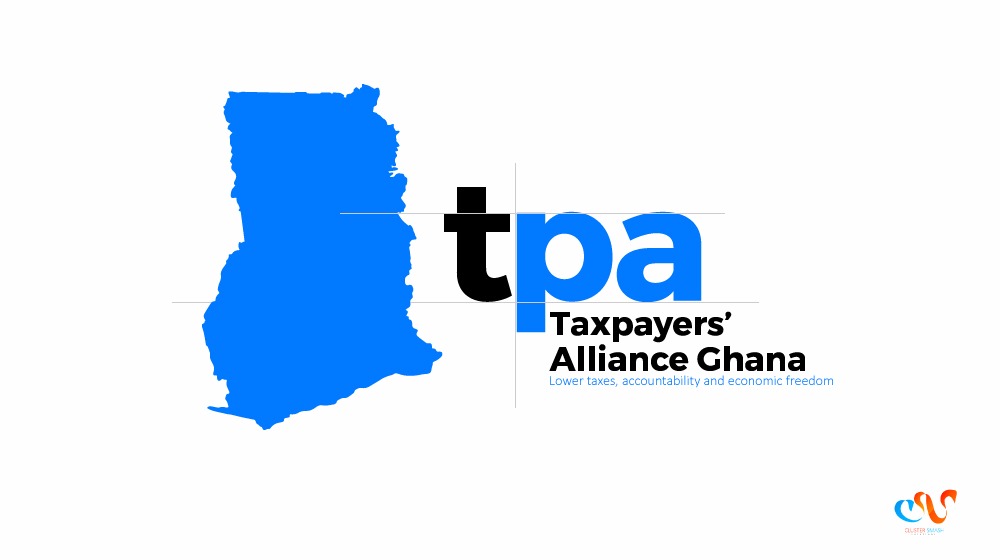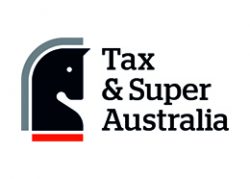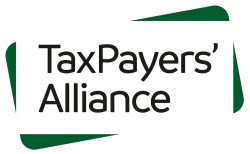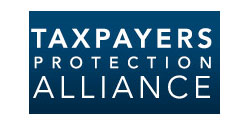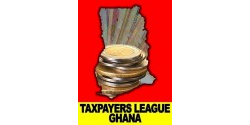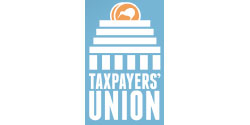Flat tax in 44 countries in 17 years
In the years especially from 2000 through 2010, WTA worked to encourage flat taxes in the democracies of the former Soviet countries. Actually collecting the taxes was an important step, and the income went up dramatically in some countries as more paid a tax they felt was fair and just.
The then WTA Secretary General, Bjorn Tarras-Wahlberg, travelled extensively in these countries meeting key government and business leaders. The effort also stimulated tax competition to attract foreign investments. Here is an updated list of nations which now have flat income tax rates.
Flat Income Tax Rates Updated 2015 by Bjorn Tarras-Wahlberg
The Taxpayers’ Alliance Stamp Duty Policy Victory
Country: United Kingdom
Campaign: Stamp Out Stamp Duty
Objective: Cuts in Stamp Duty Land Tax
Launch date: August 2013
Policy win: December 2014
Background and key campaign messages:
Before 3 December 2014, people in the UK paid a slab rate Stamp Duty Land Tax (normally known as “Stamp Duty”) when they bought a house worth more than £125,000, at a rate of 1, 3, 4, 5 or 7 per cent on the total purchase price, depending on the price band of the property. If you bought a £250,000 property you paid per cent, or £2,500. But if you bought one for £250,001, you paid 3 per cent, or £7,500.03.
In August 2013, we launched our new campaign – Stamp Out Stamp Duty – to push this hugely important issue up the political and media agenda.
Our key campaign messages were:
– Stamp Duty is arbitrary and unfair. Richer people who don’t need to move to a new home don’t need to pay it while poorer people who do need to move do have to pay it.
– Stamp Duty inhibits people from moving when they need to. The result is that people stay put when it would make sense for them to move for a variety of reasons such as getting a new job, being closer to relatives or having enough space for a growing family.
– The ‘slab rate’ nature of Stamp Duty means that it gums up the market around the threshold. This means that buyers are extremely sensitive to differences in prices around these thresholds and that the market can respond by negotiating down the fixtures and fittings included in the property exchange rather than negotiating up the price, once it hits a threshold. This is economically destructive and wasteful.
We called on the Government to do one of three things, with the long-term view of abolishing Stamp Duty completely.
– halve the rates
– double the thresholds
– scrap the slab rate
We used six methods of campaigning:
Research:
We released three research papers during the campaign, which underpinned our activity and helped shape the debate:
Research Note 128: More than a quarter of home-buyers hit with a Stamp Duty bill for £7,500 or more http://www.taxpayersalliance.com/stampduty.pdf
Stamp Duty – a counterproductive tax. A Proposal for Reform (economic modelling that refutes the claim that reform of Stamp Duty would reduce government revenue) http://www.taxpayersalliance.com/stampdutymodelling.pdf
Research Note 129: Three in ten homes to suffer Stamp Duty hike by 2017
http://www.taxpayersalliance.com/stampdutyprices.pdf
Digital campaigning:
Our user-friendly campaign microsite – www.stampoutstampduty.org – allowed supporters to enter their postal code and quickly and easily write to their MP about Stamp Duty.
Grassroots activism:
We held 14 ‘Stamp Out Stamp Duty’ action days across the country, which were some of our most successful days out. People were incredibly supportive and interested, with dozens of people telling us how Stamp Duty was negatively affecting their families.
Working with industry:
We liaised with two of the UK’s largest estate agents, as well as the National Association of Estate Agents and local agencies, to promote the campaign.
Media activity:
We worked with major media outlets throughout the campaign to ensure maximum exposure.
Direct political engagement:
We spoke to politicians, special advisers and Treasury officials from all the parties about how Stamp Duty was impacting hard-working taxpayers and how it could be reformed. We also held a briefing in Parliament shortly after the launch of the campaign and – because of our campaigning – a Member of Parliament secured a parliamentary debate on the issue, where our research was cited.
Measuring our success
Before the launch of the campaign, we set three major goals to measure our success:
Policy change: a cut in Stamp Duty worth more than £200 million delivered before the end of this Parliament in April 2015.
At the Autumn Statement on 3 December 2014 – only 16 months after the launch of our campaign – Chancellor George Osborne announced the abolition of the slab rate on Stamp Duty. In his speech, he stated:
“…I am today abolishing the residential slab system altogether. In future each rate will only apply to the part of the property price that falls within that band – like income tax. Here are the new marginal rates. You will pay no tax on the first £125,000 paid. Then 2% on the portion up to £250,000. Then 5% up to £925,000. Then 10% up to £1.5 million. Then 12% on everything over that. As a result stamp duty will be cut for the 98% of homebuyers who pay it … The whole reform represents a tax cut of £800 million per year. Only homes that cost just over £937,000 will see their stamp duty bill go up under this system – gradually to start with, rising to more substantial sums for the most expensive homes.”
– More supporters added to the database: over 10,000 to write to their MP, adding at least 5,000 new supporters to our list.
We fell short of our target for this campaign, but nearly 4,000 people used the site to write to their MP. This was still crucial; many supporters sent us the response letters from their Member of Parliament, which showed that the politicians were sitting up and taking serious notice of this issue. This activity helped push MPs to take action and helped Anne Main MP secure the parliamentary debate.
– Strong media coverage: research or the campaign itself covered in newspapers and magazines with a combined circulation of more than 2 million and broadcasters with a combined reach of more than 5 million.
On launch day, our research was the main story on the front page of the Times – journalist Matthew Syed called it a “powerful page one lead” in the BBC News newspaper review – and it was the first story at the top of BBC Radio 4’s flagship programme Today. It was also covered on television, on other radio stations and in almost all of the major national newspapers. Our media coverage was sustained through follow-up reports, supplying commentary when national house prices were released, writing opinion articles for newspapers and appearing regularly on news programmes to discuss the campaign. On the day of the launch alone, we reached at least 7 million people through 9 newspapers and 9 million through broadcasters.
Fiscal Responsibility Starts at the Top: The CTF’s Campaign to Reform Politicians’ Pensions
Across Canada the Canadian Taxpayers Federation (CTF) has successfully sought reform of legislators’ compensation around the guiding principles of transparency, fairness and simplicity. Specifically, the CTF has opposed gold-plated pensions, and so-called “tax-free allowances” that exempt one-third of legislators’ salaries from federal and provincial income taxes.
The first step in reforming this plan was simply to calculate the benefits and release them to the media and public (sunlight is the surest form of disinfectant). Aside from showing what each legislator would receive when they left office, we calculated how many taxpayer dollars were being put into the pension plan for every one dollar put in by a politician. For the federal parliamentary pension plan in Canada that ratio was $24 to $1.
But before we toppled the federal plan we built momentum by leading successful campaigns to reform legislators’ compensation in the provinces starting in the province of Alberta in 1993. We organized successful petition drives and made detailed submissions to compensation review panels. As of 2014, most provinces have pensions in line with public expectations and no province exempts its politicians from having to pay income tax.
Over the years, we undertook many publicity stunts to draw attention to the gold plated plans — we flooded the lawn of Parliament Hill with pink plastic pigs, we delivered massive mock pension cheques to politicians’ offices, recalculated benefits in the aftermath of every election — and along the way the plan was modified. But it took until 2012 before real change was implemented.
In 2012 the CTF stepped up its efforts launching a cross-Canada billboard campaign, running restroom advertising and on September 17th, the day MPs returned to parliament after their summer recess, they were greeted by a 2,000 square-foot aerial banner pulled by a plane over Parliament Hill that read “Fix your Pensions!”
That week, the lead editorial in the Ottawa Citizen wrote: “CTF’s demands can no longer be swatted aside … an aggressive reworking of MPs pensions will be tabled … and it’s about time.”
On October 19, 2012 the federal parliament voted unanimously to reform their gold-plated retirement benefits. The changes weren’t perfect, but whereas taxpayers were once coughing up $24 for every $1 an MP put into their pension kitty, the changes, once fully implemented, will reduce that ratio to around $1.62 to $1. Today, the federal government is properly moving to reform the pensions of government employees. Fortunately, they have the moral authority to do so.
Lower Taxes Come to Sweden
Just six months after they cast their votes in the elections, taxpayers received two rounds of good news when the Swedish government announced that two of the least popular taxes — the real estate and capital taxes — were to be abolished. For many years, Sweden has had the highest tax burden in the world — 50% — which is 10% higher than the OECD average. The typical taxpayer remits 3 kronor in taxes for every 5 kronor earned. Many pay a lot more. The political parties in Sweden have historically had very different opinions about individual taxes, but have otherwise been in agreement about the high tax politics that have characterized the post-war period. So what made the new government decide to abolish these taxes?
For several years, the Swedish Taxpayers Association has been leading a long-term project to reduce Swedish taxes. One problem encountered was that Swedish taxes — albeit high and numerous — have been hidden from most citizens. A significant exception, however, is the real estate tax, a tax paid by property owners. This, in combination with regulations forcing many to pay a tax that in some cases exceeds their income, has meant widespread discontent. We have now made the real estate tax a relevant subject in the debate over taxes. The Swedish Taxpayers Association has been organizing annual demonstrations against the tax, to which the political parties are always invited. At the same time, the media have been provided with ample news materials, important statistics, and informed commentaries. Prior to the 2006 elections, these debates led to the non-Socialist parties being forced to agree on a proposal to abolish this tax. After the elections — which were won by the non-Socialist parties — the Swedish Taxpayers Association has reminded voters and the elected parties about their vow. In order to avoid controversy surrounding inevitable accusations of fraud, the government has been forced to honor this vow.
The capital tax has, as a result of the comprehensive flight of capital, led to a reduction in investments, and as a consequence, a reduction in employment. The tax has, however, been difficult to abolish, as it has been seen by many (quite wrongly) as a way of leveling out social differences. By pointing out the damages caused by the tax and the resulting muddled and unfair regulations, the Swedish Taxpayers Association has managed to apply pressure, primarily in the business press, to have the tax abolished. In this debate, even the Swedish National Tax Board has agreed with this criticism.
In sum, our efforts have resulted in the government’s decision to abolish the tax early in the mandate period, in order to avoid a heated discussion about income distribution effects closer to the 2010 elections. Once again, we have shown that when properly organized and united, taxpayers can make major gains toward the economic freedom they deserve.
California 1978: The Citizens Awaken — Proposition 13 Brings Sky-High Property Taxes to Earth
Many recognize the State of California as the birthplace of the modern Tax Revolt in the United States, with the adoption of Proposition 13 in 1978. The measure cut property taxes from 2.5 percent of market value of a residence and capped the actual rate at just 1 percent. Additionally, it required a 2/3 “supermajority” of the State Legislature to increase other state taxes.
While some explain Proposition 13’s success as a natural public reaction to rising property values (and therefore taxes), failure of elected representatives to address the problem had a more important role. As far back as 1968, the political establishment sought to derail or delay significant tax relief. That year, the Legislature placed a measure of its own on the ballot to compete with Proposition 9, a citizen-initiated “direct democracy” proposal that would have functioned much like the property tax lid in Proposition 13. The Legislature’s proposal was modest in comparison, offering a per-home exemption of $750 of assessed value from property taxes. Proposition 9 was defeated, and the Legislature’s alternative was adopted.
But just five years later, property taxes were rising again. Local governments boasted to residents about lower property tax rates, yet failed to acknowledge that the assessments to which the rates applied had doubled or tripled. By 1977, the State Legislature got into the act, squandering a year’s worth of debate over various tax relief proposals to no avail. All the while, California’s budget surplus soared, rendering absurd all the claims from public officials that a property tax cut was “unaffordable.”
It took lawmakers and Governor Jerry Brown until March of 1978 – three months after Proposition 13 had qualified for the ballot — to place a weaker substitute, Proposition 8, on the election slate. But the hand-wringing did not end there. Proposition 13’s opponents predicted the loss of 451,000 jobs and a 2.8 percent jump in unemployment if the measure passed. A Sacramento City Council Member warned, “most counties will face such drastic staff cutbacks that efficient administration of welfare programs at the local level will be impossible.”
But voters would not be fooled this time: Proposition 13 prevailed. According to California political economist Alvin Rabushka, this was because the citizen-drafted measure offered a better alternative:
“Although the [Legislature’s] plan might have lowered tax rates, future assessment increases could still have increased property taxes. Future tax rate reductions under [Proposition] 8 need have occurred only when assessed values exceeded the complicated local government revenue limit. Under [Proposition] 13, assessment increases were limited to 2 percent per year so long as a house was not sold. Thirteen offered much greater assurance to property owners about their future property taxes….Virtually the entire Legislature championed 8 over 13.”
In light of Rabushka’s observation, overburdened Californians ought to ponder how bad their plight might have been without the right to put binding laws of their own to a public vote through the Initiative and Referendum (I&R) process.
In an exhaustive study of 32 years of economic data, William Craig Stubblebine found that real per capita personal income grew faster in California after Proposition 13 than before it. All of this private sector growth occurred even as government revenues as a share of personal income rose by 0.6 percent annually. The San Jose Mercury, whose editorial pages railed against Proposition 13, admitted a year after passage that “Armageddon is not exactly upon us.” Napa County’s Administrator, who jumped on the anti-13 bandwagon, conceded that “In all my years I have never been so embarrassed as by such tactics [as those used against Proposition 13]. They were blatant and dishonest.”
Using direct democracy, citizens who were derided as “amateur legislators” broke the economic and political gridlock that the so-called “professionals” couldn’t. Today, similar movements in Maine, Nevada, Virginia, Washington, and other states have met with varying degrees of success, but California has always proven to be a great inspiration to taxpayer activists in the United States.
Colorado: Taxpayers Win Their “Bill of Rights”
This state’s experience clearly illustrates the difference in opinion between lawmakers and citizens over what constitutes a stringent Tax and Expenditure Limitation. In 1977, the State Legislature adopted a statutory limit, then regarded as innovative, on general fund appropriations. Intended to allay citizens’ concerns over budget growth during a time of economic expansion, the law restricted state appropriations increases to 7 percent, relative to Colorado’s general fund appropriations in the prior year.
But much to the dismay of taxpayers — and the indifference of most public officials — state and local government expanded, during Colorado’s economic booms and busts. From 1979-90, property tax revenue increased 151 percent, 2-1/2 times faster than inflation. From 1981-1990, income tax revenues outpaced the growth in personal incomes by a similar margin. Meanwhile, state and local debt was skyrocketing, up 180 percent during 1980-87.
Amidst this concern, activists attempted on three separate occasions to qualify and pass an initiative known as the Taxpayer’s Bill of Rights (TABOR). While successive versions of TABOR contained refinements, the measure basically stipulated that voter approval would be required for any state or local expenditures of revenue above and beyond inflation and population growth. Although the initiative’s proponents failed to win at the polls in 1986, 1988, and 1990, their margin of defeat became smaller.
Faced with the possibility that TABOR proponents might succeed by the next election, in 1991 the Legislature passed a new statutory expenditure limit. As in California, the Colorado political establishment’s solution was comparatively tame. The law limited annual increases in state general fund appropriations to 6 percent of the previous year’s level or 5 percent of total state personal income for the two previous years, whichever is less. Undaunted, activists pressed on with the TABOR measure, which had qualified for the November 1992 ballot as Amendment 1.
Public officials, from the Governor to County Sheriffs, wildly predicted that fiscal and economic calamity would descend upon the state if Amendment 1 passed. One investment banker went so far as to predict that the measure could increase chances for the Pope’s assassination during a planned visit to the city of Denver. But the voters ignored the rhetoric and adopted the tax limit. And to date, according to State Treasurer (now Governor) Bill Owens (R), not a single one of the far-fetched doom scenarios has come true:
“[T]he Pope came and went – successfully and without any threat to his person. Crime has dropped, our economy is booming, while the credit ratings for most public debt have actually improved. …Colorado’s economy has improved more in the past four years than at any time since World War II; tax revenues have surged as the leveling off of taxes has led to new business investment; job growth has surpassed the national average every year since 1992 and unemployment has fallen to 2 percent below that of the rest of the country.”
Opponents of Amendment 1 have likewise come to appreciate its unique impact on the fiscal policy process. In 1993, Governor Roy Romer (D) admitted that passage to him meant “two things: ‘We want you to run a leaner government’ and ‘we want to participate’. With a message like that, clearly we need some outreach that, hopefully, will close the gap between citizens and the government.” Romer’s Director of State Planning and Budgeting agreed, and observed “…Amendment 1 came along, and it seemed like the right time to go out and retest our assumptions about the people’s order of values.”
It is difficult to imagine any legislatively-imposed limit inducing such reactions. The Independence Institute commissioned Fred Holden, author of the Total Power of One in America, to examine a decade’s worth of data prior to passage of Amendment 1 and after its enactment. Holden determined that in every respect, the measure worked as advertised and delivered significant benefits to taxpayers and the economy. In the 10 years before the tax limit became law, Colorado revenues and outlays grew more than twice as fast as inflation and the state’s population. During the decade following Amendment 1, actual taxes and spending fell into line with inflation and population, proving that politicians could not easily circumvent the new law’s straightforward provisions. Meanwhile, the private sector benefited tremendously from a consistent limit on the expansion of the public sector. Before the new law, government jobs were being created at a faster rate than private jobs, but in the 10 years following enactment, business jobs outstripped government jobs at a rate of better than 2 to 1.
The rebate mechanism also proved a major boon to taxpayers. In five fiscal years alone (1997-2001), Amendment 1 triggered $3.5 billion in refunds — worth $3,200 for a typical family of four. But this understates the effect, since the measure also tamed revenue and budget growth every year, whether or not rebates were generated. All told, the average family paid roughly $16,700 less in taxes during the first decade of Amendment 1.
For residents of other states that allow I&R, Amendment 1 has provided another boon: along with Oklahoma’s Question 640, it has become a model for limiting government growth that has helped to touch off the next wave of the post-Proposition 13 tax revolt. Activists in Florida, Nevada, and Washington have successfully employed the concept of voter approval for higher taxes in their own ballot measures. In 2004 and 2005, Amendment 1-type measures have been proposed in more than 15 states, including Idaho, Kansas, Maryland, Minnesota, Virginia, and Wisconsin. However, in 2005, Amendment 1 was temporarily weakened by a proposal from the state’s Governor (ironically, Bill Owens) and Legislature to suspend some of its restrictions. Yet at least, citizens had the opportunity to vote on this change, instead of having the change forced upon them by decree.









